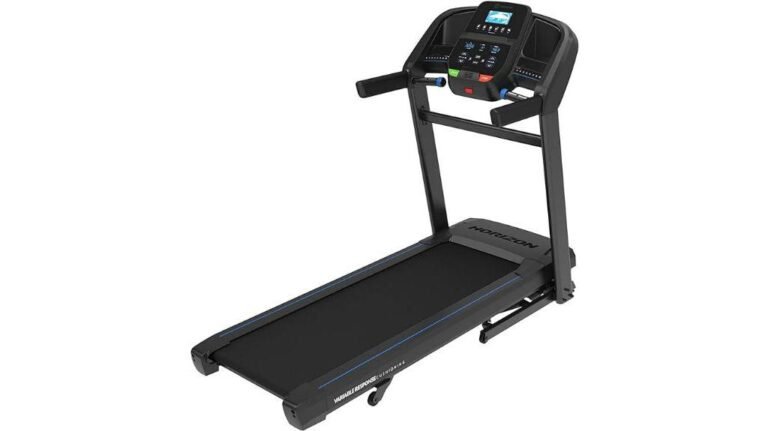Yoga for Stress Relief: A Beginner's Guide
If you've ever felt overwhelmed by the demands of everyday life, you're not alone. One way to start managing stress effectively is by exploring the world of yoga.
By incorporating simple poses and breathing techniques into your routine, you can begin to experience a sense of calm and relaxation.
But how exactly can yoga help you navigate through tense situations and find inner peace? Let's uncover the key benefits and practical tips that can aid you on this journey towards a more serene state of being.
Key Takeaways
- Yoga combines poses, breathing, and meditation for stress relief.
- Specific poses and techniques reduce stress levels effectively.
- Mindful breathing exercises and techniques enhance relaxation.
- Creating a relaxing environment promotes inner peace during yoga practice.
Benefits of Yoga for Stress Relief
If stress has you feeling overwhelmed, practicing yoga can provide significant relief by calming your mind and relaxing your body. Yoga benefits your stress management in various ways. Through the practice of specific yoga poses and relaxation techniques, you can effectively reduce stress levels and promote overall well-being.
Yoga offers a holistic approach to stress relief, combining physical postures, breathing exercises, and meditation to help you cultivate a sense of inner peace and calm. The gentle stretches and movements in yoga poses help release tension from your body, while focusing on your breath during practice can quiet your mind and enhance relaxation.
Getting Started With Basic Poses
Start your journey into stress relief through yoga by exploring some basic poses that will help you ease tension and relax both your body and mind. Practicing these poses with proper alignment and gentle modifications will ensure a safe and effective experience. Here are some tips to get you started:
- Mountain Pose (Tadasana): Stand tall with your feet hip-width apart, grounding down through all four corners of your feet while reaching up through the crown of your head. Focus on lengthening your spine and relaxing your shoulders.
- Child's Pose (Balasana): Begin on your hands and knees, then sit back on your heels while reaching your arms forward. This gentle pose stretches your back and shoulders, promoting relaxation.
- Downward Facing Dog (Adho Mukha Svanasana): Start on your hands and knees, then lift your hips up and back. Keep your spine long, and your heels reaching towards the ground. This pose helps to release tension in the back and hamstrings.
- Corpse Pose (Savasana): Lie flat on your back with your arms by your sides and palms facing up. Close your eyes and focus on deep breathing, allowing your body to completely relax. Savasana is a restorative pose that promotes overall relaxation and stress relief.
Breathing Techniques for Relaxation
Feeling stressed?
Let's explore calming breath patterns, mindful breathing exercises, and relaxation through respiration.
These techniques can help you find peace and serenity amidst life's chaos.
Take a deep breath, and let's journey into the world of soothing breathwork.
Calming Breath Patterns
To enhance your relaxation and reduce stress levels, practice incorporating calming breath patterns into your daily routine. Deep breathing and relaxation techniques can have a profound impact on your overall well-being.
Here are four calming breath patterns that you can try:
- 4-7-8 Breathing**: Inhale for a count of 4, hold your breath for a count of 7, and exhale for a count of 8.
- Equal Breathing: Inhale for a count of 4, then exhale for a count of 4. Keep the breath lengths equal.
- Belly Breathing: Place one hand on your chest and the other on your belly. Inhale deeply through your nose, allowing your belly to rise.
- Alternate Nostril Breathing**: Close one nostril with your thumb, inhale, then switch nostrils and exhale through the other side. Repeat.
Practice these calming breath patterns regularly to experience their soothing effects.
Mindful Breathing Exercises
Enhance your relaxation and cultivate mindfulness with a variety of breathing techniques designed to promote relaxation and reduce stress levels. Deep breathing techniques involve taking slow, deep breaths to activate the body's relaxation response, calming your mind and reducing tension.
By focusing on mindful breath awareness, you can anchor yourself in the present moment, letting go of worries and distractions. Practice diaphragmatic breathing by inhaling deeply through your nose, feeling your abdomen rise, then exhaling slowly through your mouth, allowing your belly to fall. This technique helps regulate your body's stress response and promotes a sense of calm.
Incorporate these mindful breathing exercises into your daily routine to combat stress and foster a peaceful state of mind.
Relaxation Through Respiration
Looking to alleviate stress and promote relaxation? Deep breathing techniques can be a powerful tool to help calm your mind and relax your body.
Here are four effective relaxation techniques using deep breathing:
- 4-7-8 Technique**: Inhale for a count of 4, hold for 7, and exhale slowly for 8.
- Belly Breathing: Place one hand on your chest and the other on your belly. Breathe deeply into your belly, feeling it rise with each inhale.
- Alternate Nostril Breathing: Close one nostril with your thumb and breathe in, then close the other nostril with your finger as you exhale.
- Box Breathing**: Inhale for a count of 4, hold for 4, exhale for 4, and hold for 4 before inhaling again.
Practice these techniques regularly to experience the calming effects of deep breathing.
Setting up a Relaxing Space
Creating a calming environment for your yoga practice starts with setting up a space that promotes relaxation and tranquility. Begin by designating a specific area in your home where you can practice without distractions. This personal space should be clutter-free and quiet, allowing you to focus on your practice without external disturbances. Consider adding elements like calming colors, soft lighting, or soothing music to enhance the stress-free environment you're aiming for.
Incorporating self-care practices into your space can further amplify the relaxation benefits of your yoga practice. This could include using essential oils, burning incense, or displaying items that bring you joy and comfort. Make sure your space is well-ventilated and at a comfortable temperature to support deep breathing and muscle relaxation. By creating a welcoming and peaceful environment, you're setting the stage for a more mindful and rejuvenating yoga session that can help alleviate stress and improve your overall well-being.
Incorporating Meditation Into Your Practice
To deepen the relaxation and mindfulness in your yoga practice, consider integrating meditation techniques that can enhance your overall experience and stress relief benefits. Meditation techniques can help you cultivate a sense of inner peace and calm, allowing you to manage stress more effectively.
Here are four ways you can incorporate meditation into your yoga practice:
- Breath Awareness: Focus on your breath as you move through yoga poses. Pay attention to the sensation of each inhale and exhale, allowing your breath to guide your movements.
- Body Scan Meditation: Take a few moments at the beginning or end of your practice to scan your body for any areas of tension or discomfort. Bring mindful awareness to these areas and release any tension you may be holding.
- Loving-Kindness Meditation: Practice sending love and compassion to yourself and others. This meditation can help foster a sense of connection and empathy, promoting emotional well-being.
- Guided Visualization: Use guided imagery to create a peaceful mental landscape during your practice. Visualize yourself in a calming setting, such as a beach or a forest, to enhance relaxation and focus.
Creating a Consistent Routine
Establishing a consistent routine is key to maximizing the benefits of your yoga practice and effectively managing stress. Creating habits that support your well-being and weaving them into your daily schedule is crucial. Building consistency in your yoga practice helps you find balance not only on the mat but also in your life.
Start by choosing specific times during the day when you can dedicate yourself to yoga, whether it's in the morning to set a positive tone for the day or in the evening to unwind and release tension.
To ensure you stick to your routine, consider setting reminders on your phone or marking your practice times in your calendar. Treat these appointments with yourself as non-negotiable, just like any other important commitment. By prioritizing your yoga practice and integrating it seamlessly into your daily life, you'll gradually notice the positive effects it has on your stress levels and overall well-being.
Understanding the Mind-Body Connection
Understanding the connection between your mind and body is crucial for managing stress effectively. By recognizing the unity between your mental and physical states, you can better address the impact stress has on both aspects of yourself.
Through practices like yoga, you can learn to harmonize your mind and body, leading to a more balanced and resilient approach to handling stress.
Mind-Body Unity
Connecting your mind and body is essential for achieving a sense of balance and well-being. By practicing yoga, you can deepen your understanding of the mind-body connection through techniques like breath awareness and body awareness. Here are four ways to enhance this unity:
- Focus on Your Breath: Pay attention to the rhythm of your breath during yoga poses to calm the mind and connect with your body.
- Listen to Your Body: Tune in to your body's sensations and limits, respecting what it's telling you during practice.
- Mindful Movements: Engage in each movement consciously, aligning your body and mind to work together harmoniously.
- Stay Present: Practice being present in the moment, allowing yourself to fully experience the mind-body connection during your yoga practice.
Stress Impact
As you explore the impact of stress on your mind and body, it becomes evident how intricately linked your mental and physical well-being truly are. Stress management is crucial for maintaining overall health. When stress levels are high, your body releases hormones like cortisol, leading to physical symptoms such as headaches, muscle tension, and fatigue. Mentally, stress can manifest as anxiety, irritability, and difficulty concentrating. Implementing effective coping strategies is essential for mitigating these effects. Engaging in activities like yoga, meditation, deep breathing exercises, and spending time in nature can help reduce stress levels. By taking proactive steps to manage stress, you can enhance your overall quality of life and promote a sense of well-being.
| Physical Symptoms | Mental Symptoms |
|---|---|
| Headaches | Anxiety |
| Muscle Tension | Irritability |
| Fatigue | Difficulty Concentrating |
Practicing Mindfulness in Daily Life
To cultivate mindfulness in your daily life, start by bringing your attention to the present moment through simple activities like deep breathing or focused observation. Mindfulness can help you manage stress and promote self-care practices that enhance your overall well-being.
Here are four tips to incorporate mindfulness into your daily routine:
- Mindful Eating: Pay attention to the flavors, textures, and sensations of each bite during meals. This practice can help you savor your food and be more in tune with your body's hunger and fullness cues.
- Daily Practice: Set aside a few minutes each day for mindfulness meditation or a gentle yoga session. Consistency is key to reaping the benefits of mindfulness in your life.
- Focused Observation: Take moments throughout your day to observe your surroundings without judgment. Notice the colors, sounds, and sensations around you to anchor yourself in the present moment.
- Gratitude Journaling: End your day by reflecting on three things you're grateful for. This practice can shift your focus towards positivity and enhance your overall sense of well-being.
Exploring Different Styles of Yoga
As you explore different styles of yoga, you'll find a vast array of practices that cater to various needs and preferences.
Understanding the overview of yoga styles can help you choose a practice that resonates with you.
Embrace the opportunity to discover the style that best supports your journey toward stress relief and overall well-being.
Yoga Styles Overview
Exploring the vast world of yoga styles can be an enlightening journey that helps you find the perfect practice to suit your needs and preferences. When delving into the diverse landscape of yoga traditions and flexibility options, it's essential to consider your comfort level and physical capabilities. Here are some key aspects to keep in mind as you navigate through the various yoga styles:
- Hatha Yoga: Focuses on foundational poses and breathing techniques, suitable for beginners.
- Vinyasa Yoga: Emphasizes flowing movements coordinated with the breath, offering a dynamic practice.
- Yin Yoga: Involves holding poses for extended periods to target deep connective tissues, ideal for relaxation.
- Ashtanga Yoga: Follows a specific sequence of poses with a strong emphasis on alignment and strength-building.
Choosing Your Practice
Discovering the right yoga practice for you involves considering your comfort level, physical capabilities, and the specific benefits each style offers. Personal preferences play a crucial role in choosing the best fit.
If you enjoy a dynamic workout, Vinyasa or Power Yoga might suit you. For those seeking a more gentle approach, Yin or Restorative Yoga could be ideal. Exploring options allows you to customize your practice to meet your needs.
Finding balance between challenging yourself and honoring your body's limits is key. Remember, yoga is a personal journey, so don't hesitate to try different styles until you discover what resonates with you.
Embrace the process of finding a practice that nurtures both your body and mind.
Seeking Support and Guidance
When feeling overwhelmed by stress, reaching out for support and guidance from trusted individuals can provide valuable insights and comfort on your journey to finding relief through yoga. It's essential to know that you're not alone in this process.
Here are some ways to seek support and guidance as you navigate your stress relief journey:
- Join a Yoga Community: Finding a community of like-minded individuals can offer encouragement and understanding as you explore yoga for stress relief. Online forums and local yoga classes are great places to connect with others on a similar path.
- Consult with a Yoga Instructor: A qualified yoga instructor can provide personalized guidance tailored to your needs and goals. They can offer modifications to suit your abilities and ensure you're practicing safely.
- Explore Online Resources: There's an abundance of online resources, including guided meditation sessions, yoga tutorials, and stress-relief tips. These resources can complement your practice and provide additional support outside of your yoga sessions.
- Talk to a Mental Health Professional: If stress is significantly impacting your well-being, seeking guidance from a therapist or counselor can be beneficial. They can help you navigate your emotions and develop coping strategies that align with your yoga practice.
Conclusion
As you continue your journey with yoga for stress relief, remember that like a tree swaying in the wind, you too can find strength and flexibility within yourself.
Stay committed to your practice, trust in the process, and allow yourself to grow and bloom.
With each breath and each pose, you're nurturing your mind, body, and soul.
Embrace this journey with an open heart and a peaceful mind. You're capable of finding calm amidst life's storms.






